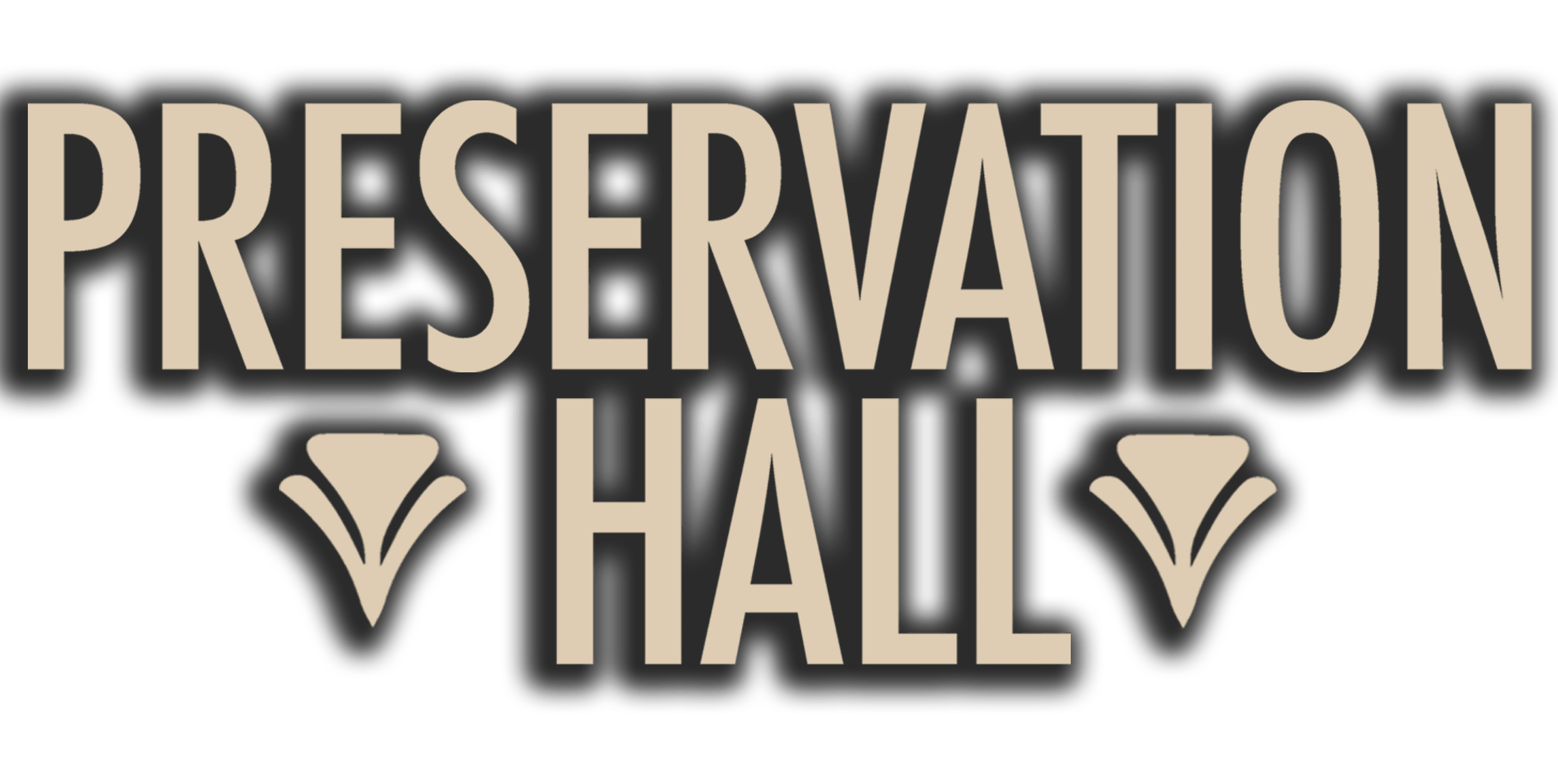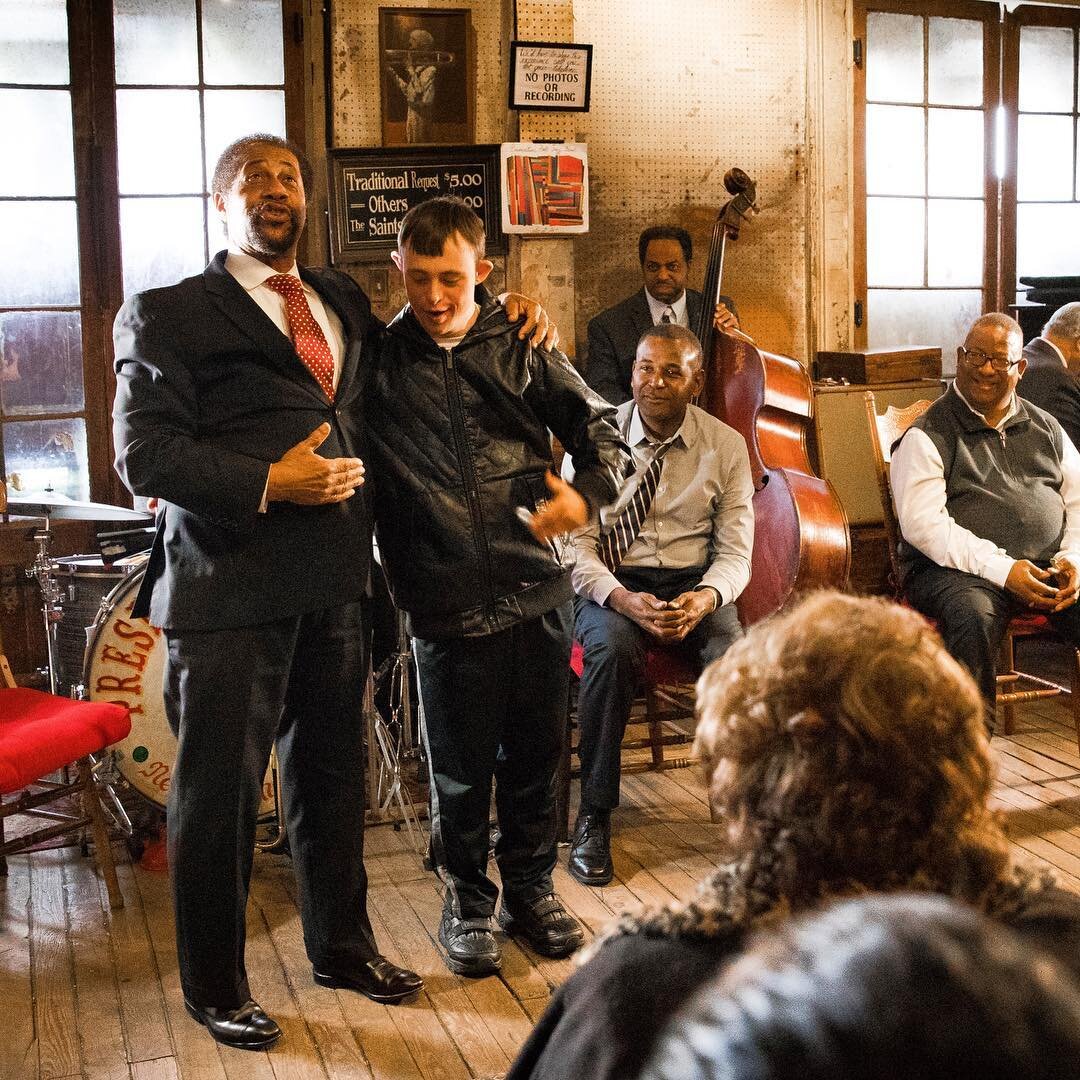Adapting Preservation Hall Lessons for Students with Disabilities
All students deserve to experience the joy of learning with music in the classroom, no matter their abilities, skill level, or age.
Enter Preservation Hall Lessons Adaptations.
Five adaptation guides for special education and inclusive classrooms are now available for FREE to teachers and music educators!
These five adaptation documents guide teachers through each lesson plan on the Preservation Hall Lessons platform, through the lens of inclusion and accessibility for students with disabilities.
You can explore the complete collection of 25 free lesson plans on New Orleans music and culture at lessons.preshallfoundation.org.
The guides were compiled and edited by Meredith Sharpe, a Neurologic Music Therapist and owner of Sharpe Notes Music Therapy in the New Orleans area, in collaboration with fellow panelists on the recent Preservation Hall Foundation New Orleans Music & Art in Special Education webinar series. You can view the panelists’ guides in context within each Lesson in the “Instructor Notes" section at lessons.preshallfoundation.org/lessons.
Lesson Adaptation: Elements of Music
Classroom Transitions
In the Elements of Music Lesson, students learn to identify the musical elements of a transitional sound, and to match the musical qualities of this sound with a corresponding action or transition, such as changing learning centers, going to lunch, or switching subjects..
Designed to better cater to students of all abilities, this Lesson Adaptation guides instructors through the creation and implementation of Transitional Sounds, Transitional Music, and Transitional Songs for students of all abilities, in addition to adaptive tools for fostering a successful learning environment throughout a student’s day-to-day routine.
Click HERE to explore the Elements of Music Lesson Adaptation
To view this Lesson Adaptation in context, click here to explore the Elements of Music Lesson
Guide: Adaptive Instruments
The PHLessons Guide to Adaptive Instruments explores ways music educators can include all students – no matter their age or abilities – in the joy of making music in the classroom. The guide suggests several manufactured instruments and accessories specifically meant for musicians with limited mobility or range of motion, in addition to simple, homemade instruments that all students can enjoy. This guide also lists technology and mobile apps that can be beneficial for students with disabilities to learn from with music. Be sure to watch the Adaptive Instruments webinar for more tips and tricks on classroom music-making!
Click HERE to explore Meredith’s guide to Adaptive Instruments
Lesson Adaptation: Blue Monday
Mindfulness and Social-Emotional Learning
Fats Domino’s classic tune “Blue Monday” inspired this lesson for students of all abilities in grades K–5 on the Preservation Hall Lessons platform. This Lesson Adaptation brings educators through six different ways to approach the lesson for students with a disability. Listening to music, articulating how the music makes students feel, and moving to a beat all assist in getting students relaxed and ready to learn.
Click HERE to explore the “Blue Monday” Lesson Adaptation
To view this Lesson Adaptation in context, click here to explore the “Blue Monday” Lesson
Guide: Adaptive Movements
This guide to Adaptive Movements in the classroom brings instructors through a simple three-step process for implementation: Movement Objective, Musical Activity, and Adaptations. The guide suggests many tips for classroom music-making students with disabilities can benefit from, using many different parts of the body to maintain a rhythm: eyes blinking, tongue clicking and finger tapping, as well as pairing words with a steady pulse – as the guide explains – to help the mind and body integrate. Be sure to watch the PH Lessons webinar on Adapting Movements & Mobility Devices for more information on adaptive movements in a school setting!
Click HERE to explore Meredith’s guide to Adaptive Movements
Lesson Adaptation: Rhythm & Beat
Sensory Integration
In this lesson, students gain awareness of how they and their peers naturally move to the rhythm of a song, and learn to act “on-beat” to “This Little Light of Mine.” Meredith suggests adapting this lesson plan for students with disabilities by guiding students through a 4/4 beat and sequence of body percussion; distributing mallets or simple hand-drums to practice impulse control, playing only at certain times within a song; and encouraging students to move or tap to different tempos, allowing them to feel “fast” and “slow” in their bodies.
Click HERE to explore the Rhythm & Beat Lesson Adaptation
To view this Lesson Adaptation in context, click here to explore the Rhythm & Beat Lesson
Throughout the Preservation Hall Lessons Webinar Series on New Orleans Music & Art in Special Education, we heard from expert panels of teachers, music educators, counselors, parents and disability activists, who each contributed invaluable knowledge to this project. We’d like to send a special thank you to the contributing panelists: Meredith Sharpe, Will Smith, Louis Ford, Bonny Dieterich, Ashley Bell, Dr. Felicia Lively, MeLinda Ford and Kate LaCour.
We are so grateful to Meredith and all of the PH Lessons webinar series panelists for sharing this information with educators around the world – to ensure ALL students are included in the joy of making music in the classroom!






